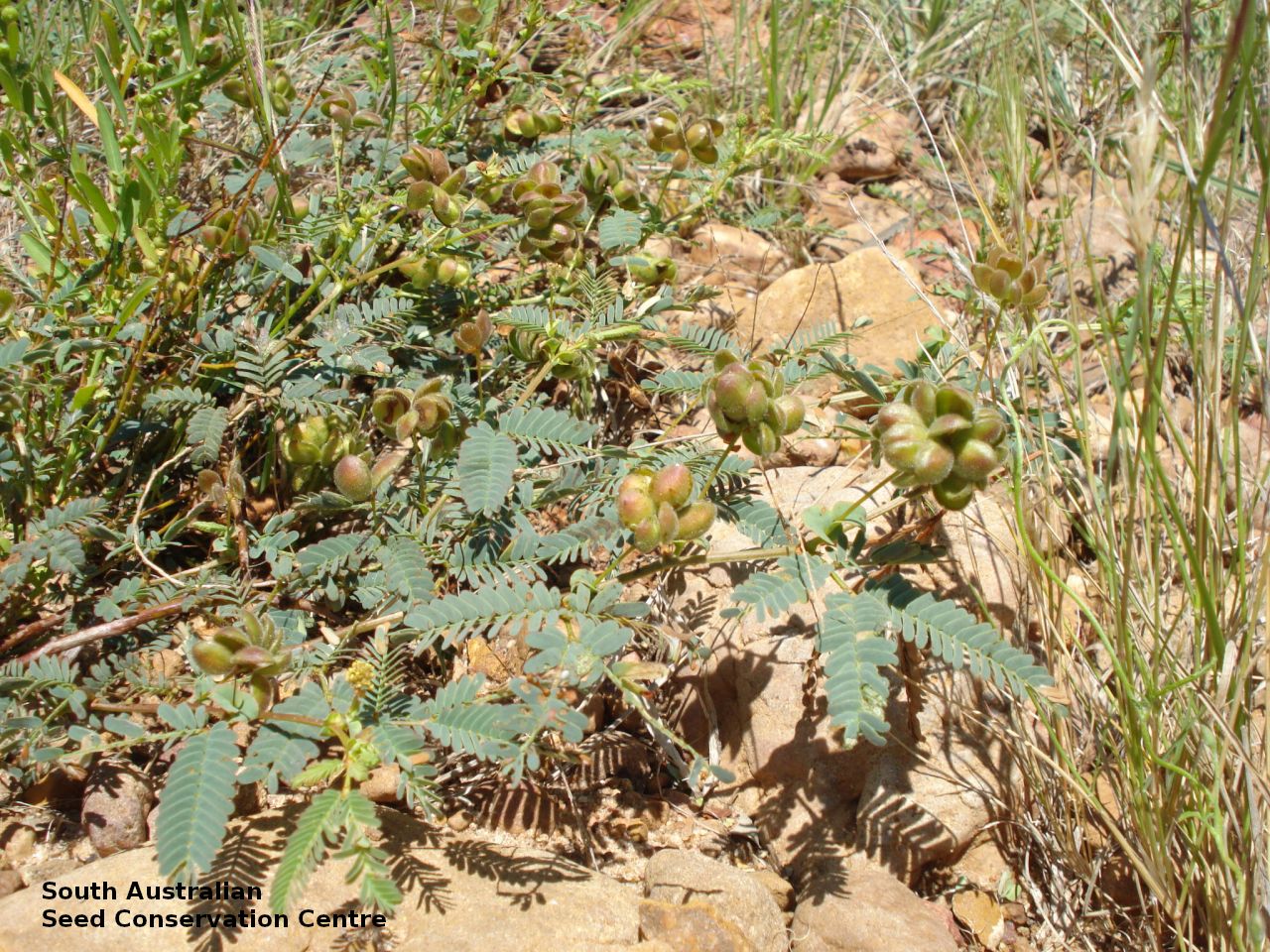
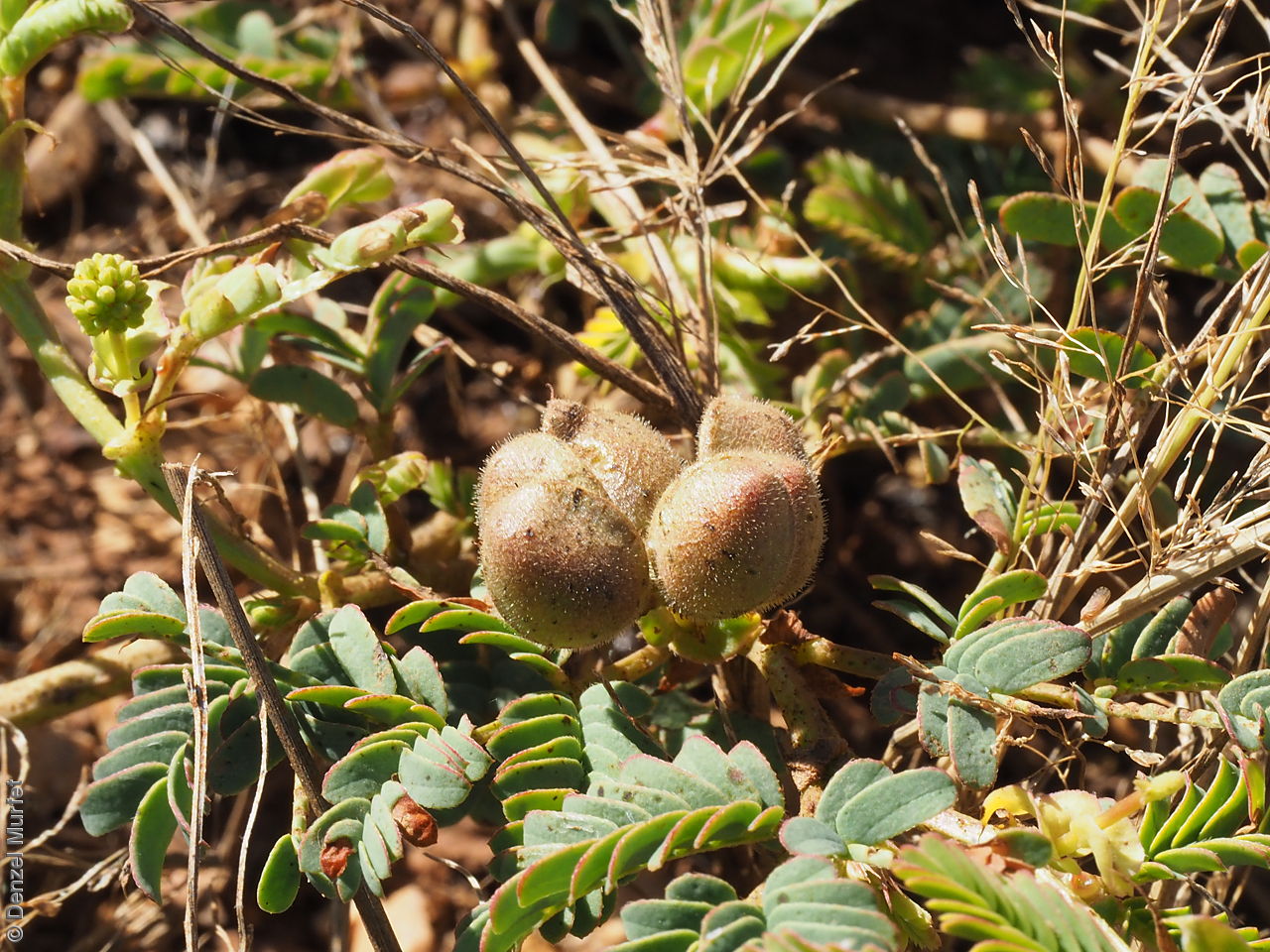
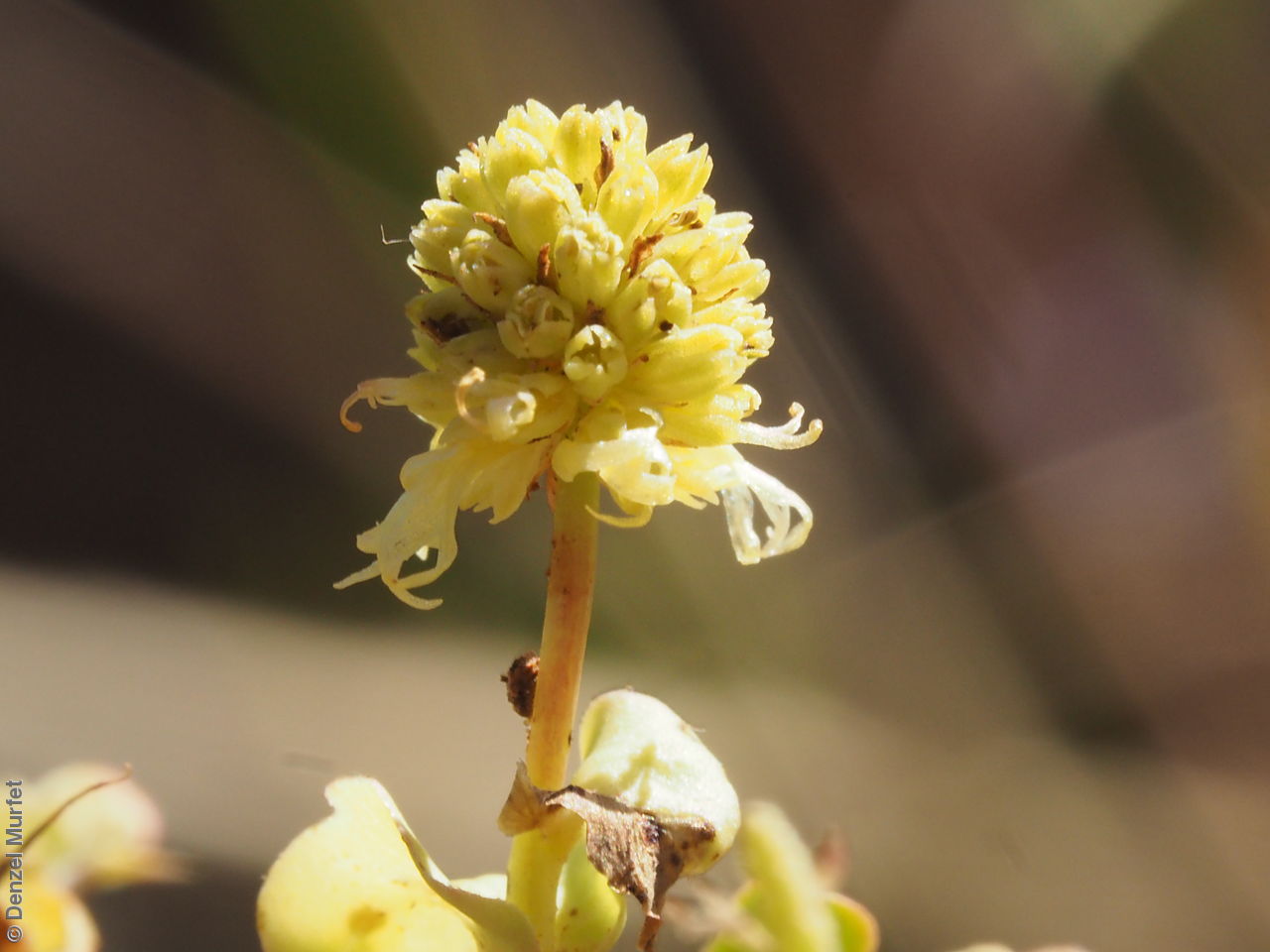
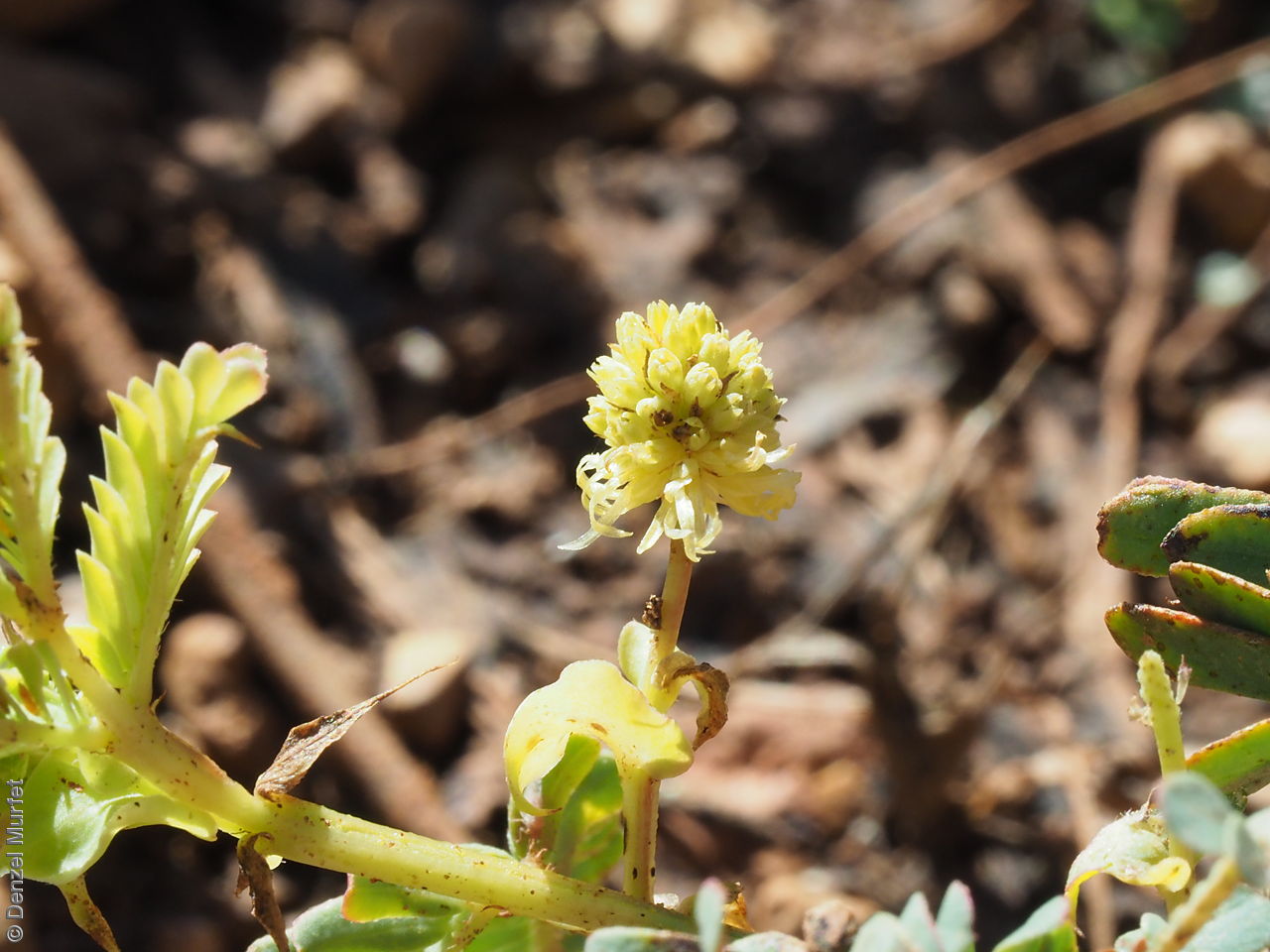
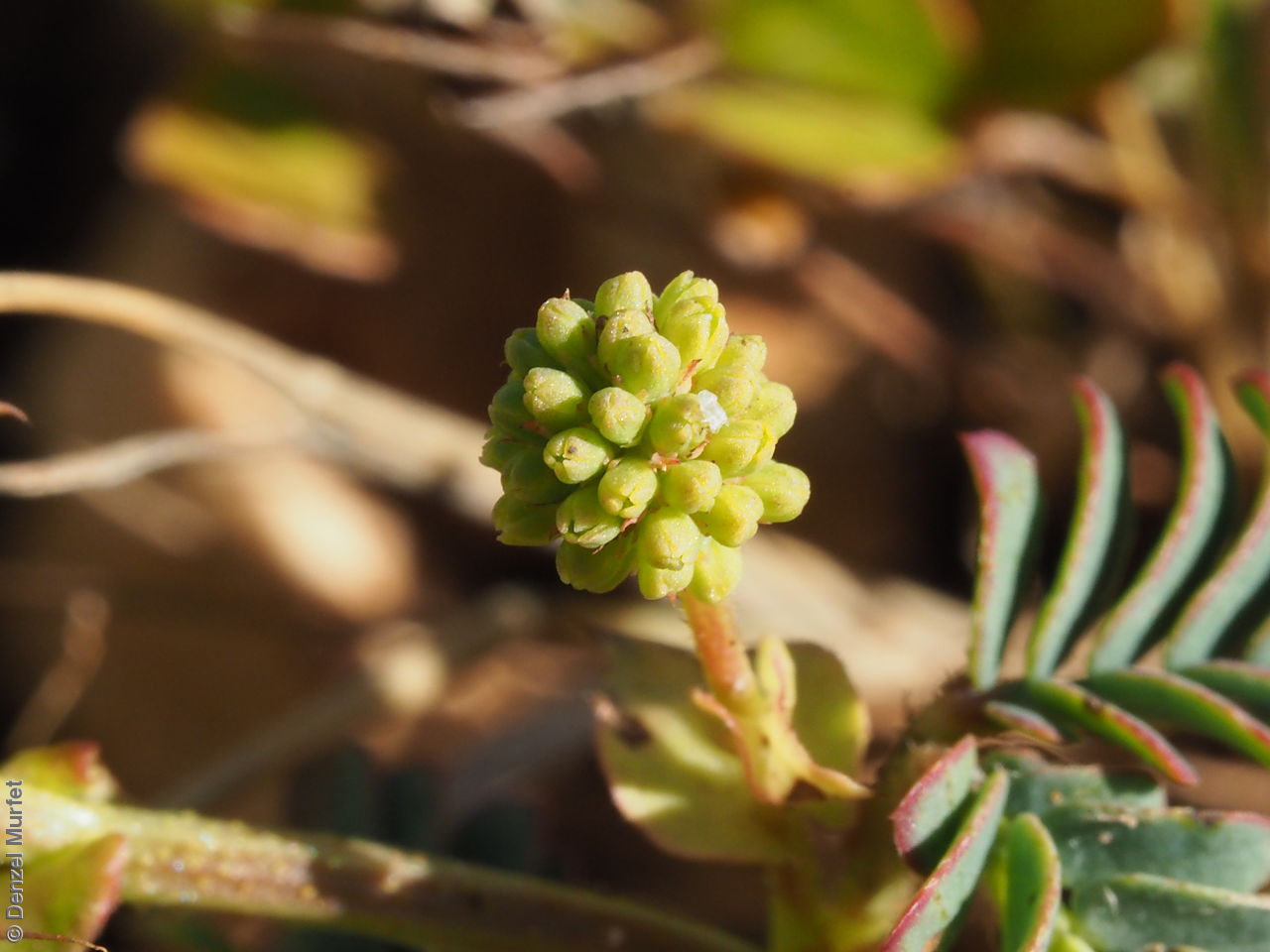
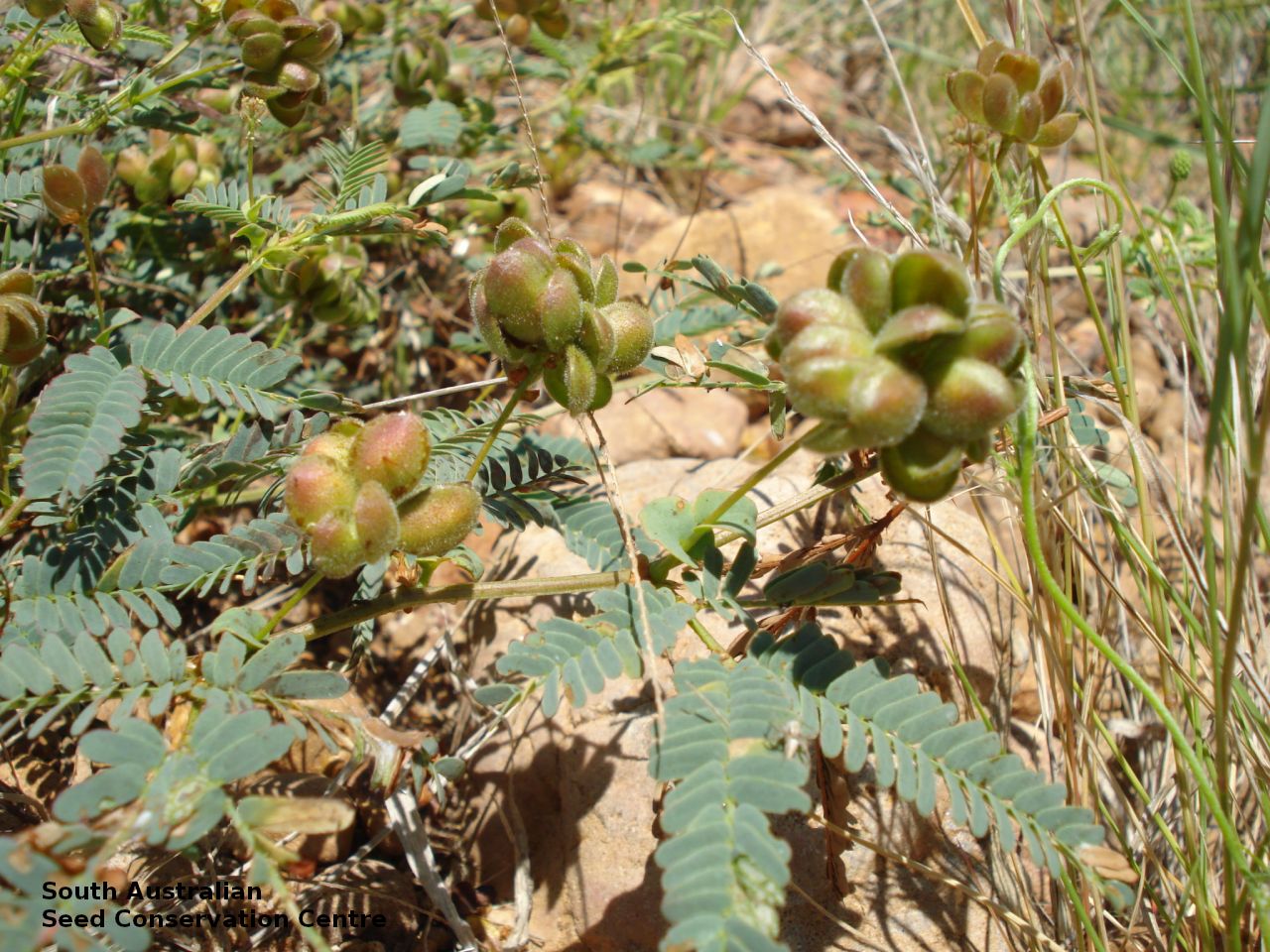
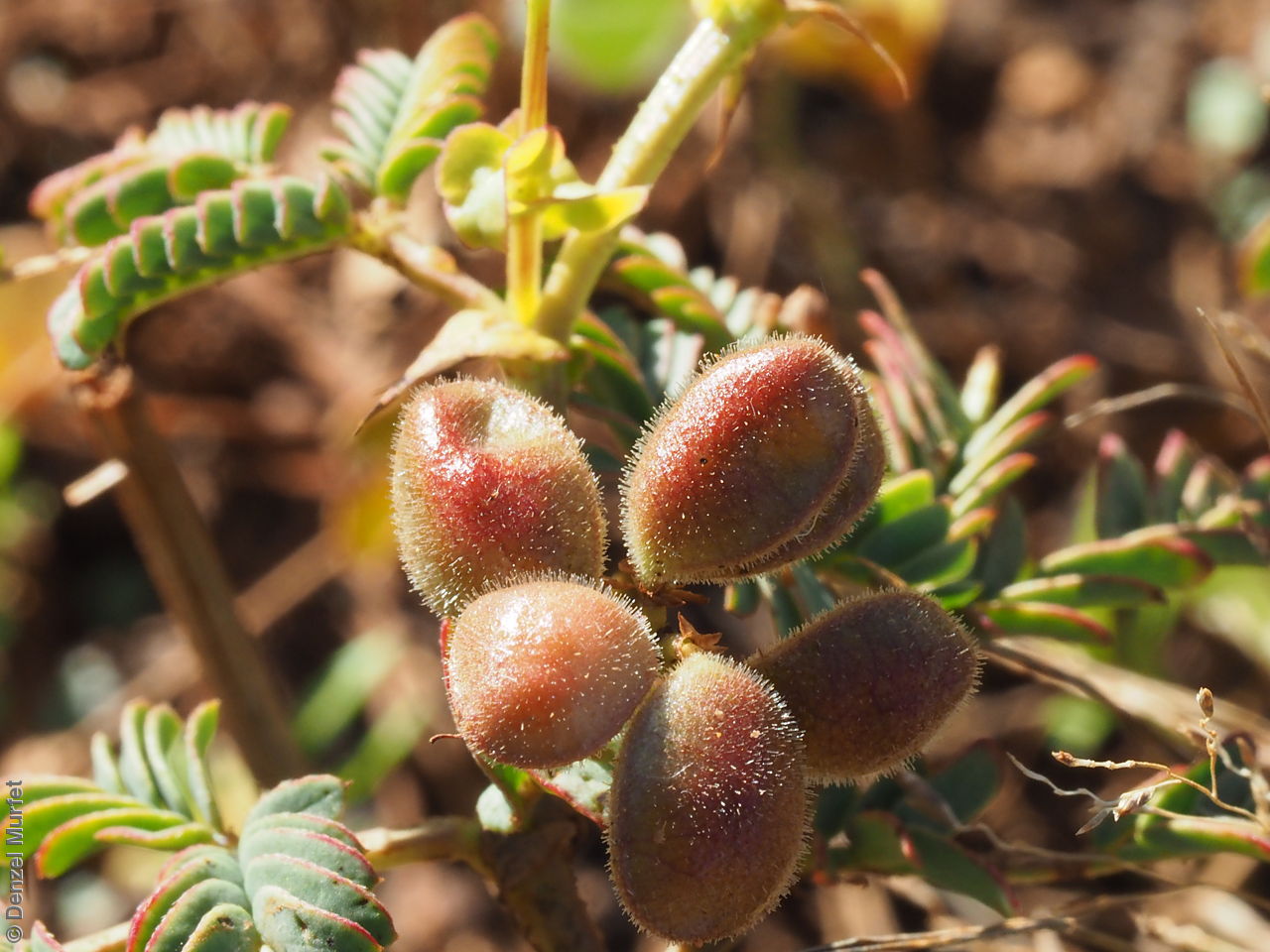
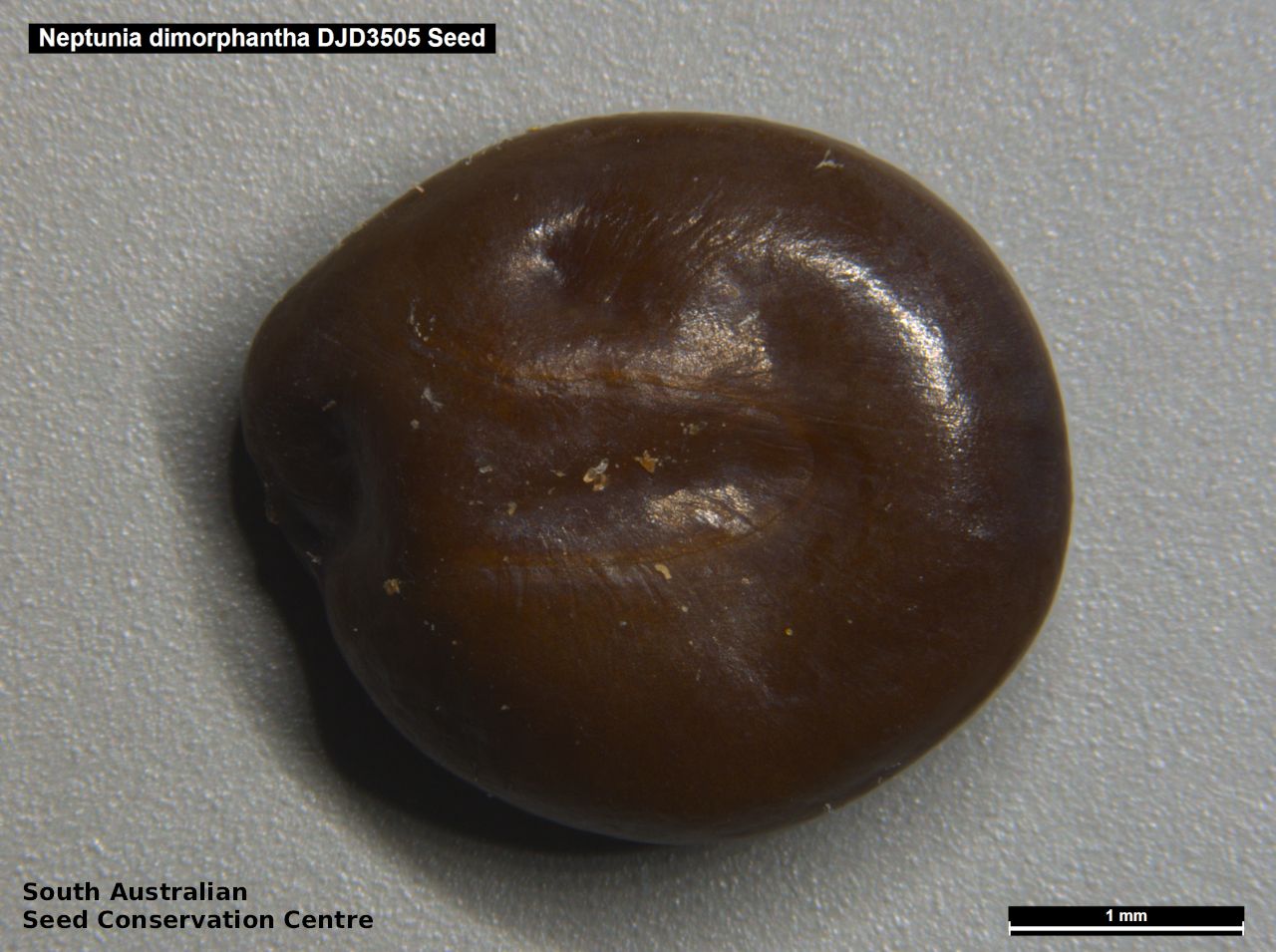

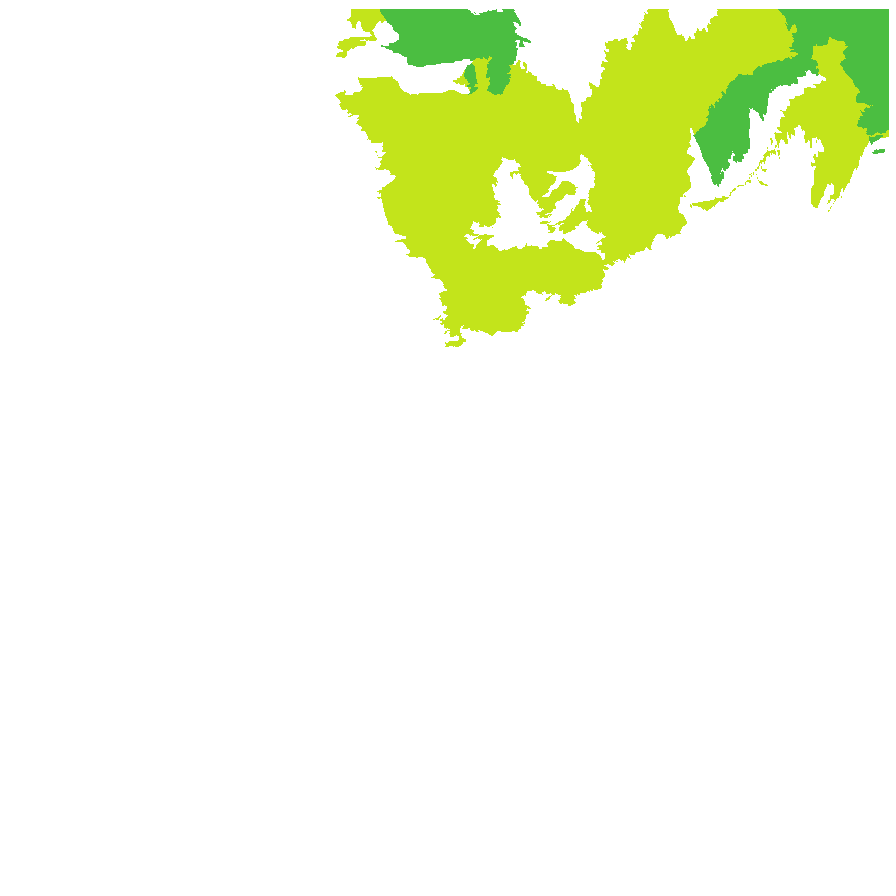
Prior names
Neptunia monosperma
Etymology
Neptunia Latin name of some water plant, from Neptunus, Neptune, Greek mythology god of the sea, rivers, and fountains. Dimorphantha from the Greek 'dis' meaning twice, 'morphe' meaning appearance and 'anthos' meaning flower; referring to the species having hermaphrodite flower, meaning it has both male and female organs, stamen and pistil.
Distribution and status
Found in the north and north-eastern parts of South Australia, growing near creeks and flood plains. Also found in Western Australia, Northern Territory, Queensland and New South Wales. Native. Uncommon in South Australia. Rare in New South Wales. Common in the other states.
Herbarium region: Lake Eyre
NRM region: South Australian Arid Lands
AVH map: SA distribution map (external link)
Plant description
Prostrate or weakly ascending herb with stems to 60 cm long, glabrous or hairy. Leaves with 2-4 rarely 5 or 6 pairs of leaflets, glabrous or pubescent, closed when touched. Flower-spikes axillary, globoid or nearly ellipsoid, yellow flowers on a long stalk. Flowering between September and November. Fruits are brown ovoid pod to 10 mm long, flat, hairy. Seeds are dark-brown seed.
Seed collection and propagation
Collect seeds between December and February. Collect mature pods, those turning brown and contain hard, dark seeds inside. Place the pods in a tray and leave to dry for one to two weeks. Then rub the pods with a rubber bung to dislodge the seeds. Use a sieve to separate the unwanted material. Store the seeds with a desiccant such as dried silica beads or dry rice, in an air tight container in a cool and dry place. This species has physiological dormancy that need to be overcome for the seed to germinate (e.g. nicking or softening the seed coat).